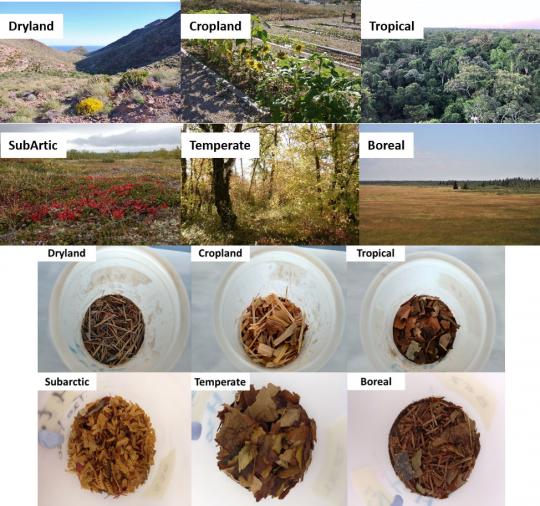Biodiversity Reading time 3 min
Taking inspiration from financial markets to step up the functionality of ecosystems
Published on 11 February 2021

In this study, researchers analysed how the distribution of resources between species (their biomass) impacts bigger biogeochemical1 cycles and the breakdown of the litter layer (plant detritus) and organic matter of soils. Is it better to use one type of species to the detriment of others, or on the contrary favour ecosystems where resources are distributed evenly between species to get the most out of biodiversity? To answer this question, the researchers looked to methods used by economists, and notably investors in financial markets. Investors can either bet all their money on one company on the stock market or make smaller investments in different sectors to minimise risk.
How to invest in an ecosystem
To test their hypotheses, the researchers reconstructed 570 miniature ecosystems from leaf litter from more than 90 species from six different ecological environments, ranging from tropical forests to arctic tundra to a myriad of cultivated crops (see photo below). In each ecosystem, they varied the biomass available for each species (the resource) to “manipulate” different facets of biodiversity:
- Dominance of species: the equivalent in economics is the business sector
- Distribution of resources: should we invest in a host of very different companies (varieties of species), or focus on one business in particular (favour a dominant area)?
- Scarcity of species: should we set aside some investment money for a few start-ups that are starting to gain traction?
- Functional equitability: should investments be evenly distributed or is it better to opt for an international holding company?
The researchers then monitored, in controlled conditions, how the ecosystems responded by measuring several ecosystem functions such as the breakdown of the litter layer, respiration of soil and the abundance of microbial diversity in soil.

Distribute evenly to boost the functionality of ecosystems
The study showed that an even distribution of resources between species improves the recycling of the litter layer and nutrients, which are key factors of soil fertility. Even distribution also promotes the microbial diversity of soils while curbing the spread of disease to plants. Lastly, the study points to the important role of species that have rare morphological and physiological properties. For example, in an ecosystem dominated by plant species with tough leaves, a small fragment of a more tender leaf allows microbes in the soil to get the energy they need to trigger the breakdown of the litter layer and allow the ecosystem to function better. In the six ecosystems studied – each very different from each other – the results show the importance of even distribution between different plant species and the presence of rare species, suggesting the findings can be applied to different ecological contexts. Therefore, to maximise the functioning of ecosystems, it is better to both distribute investments evenly and avoid forming a handful of big companies (dominating species) that would gobble up all investments, and to promote the emergence of a few start-ups that could have potentially beneficial effects on the entire ecosystem.
The current biodiversity crisis caused by human activity is one of the most pressing challenges the world faces today, according to international agencies such as the Intergovernmental Science-Policy Platform on Biodiversity and Ecosystem Services (IPBES) and the FAO. The crisis has spurred a plethora of studies that show the importance of biodiversity in the functioning of ecosystems and the services they provide, including soil fertility, regulating climate, and food production. This study proposes using that knowledge to manage ecosystems and agricultural systems thanks to the identification of species combinations that maximise the functioning of ecosystems and curb the spread of pathogens.
1 A biogeochemical cycle is the natural pathway by which chemical elements, e.g. C, N or P, enter environments like the soil, atmosphere, water or living tissue that are part of the biosphere.
|
Reference Le Bagousse-Pinguet Y., Gross N., Saiz H., Maestre F.T., Maire, V. Deschamps L., Cornelissen, H., Dacal. M., Ruiz S., Asensio-Mansilla S., Gozalo B., Ochoa V., Milla R., Singh B., Garcia Izquierdo C., Garcia-Palacios P. Functional rarity and evenness are key facets of biodiversity to boost multifunctionality. DOI : 10.1073/pnas.2019355118 |
